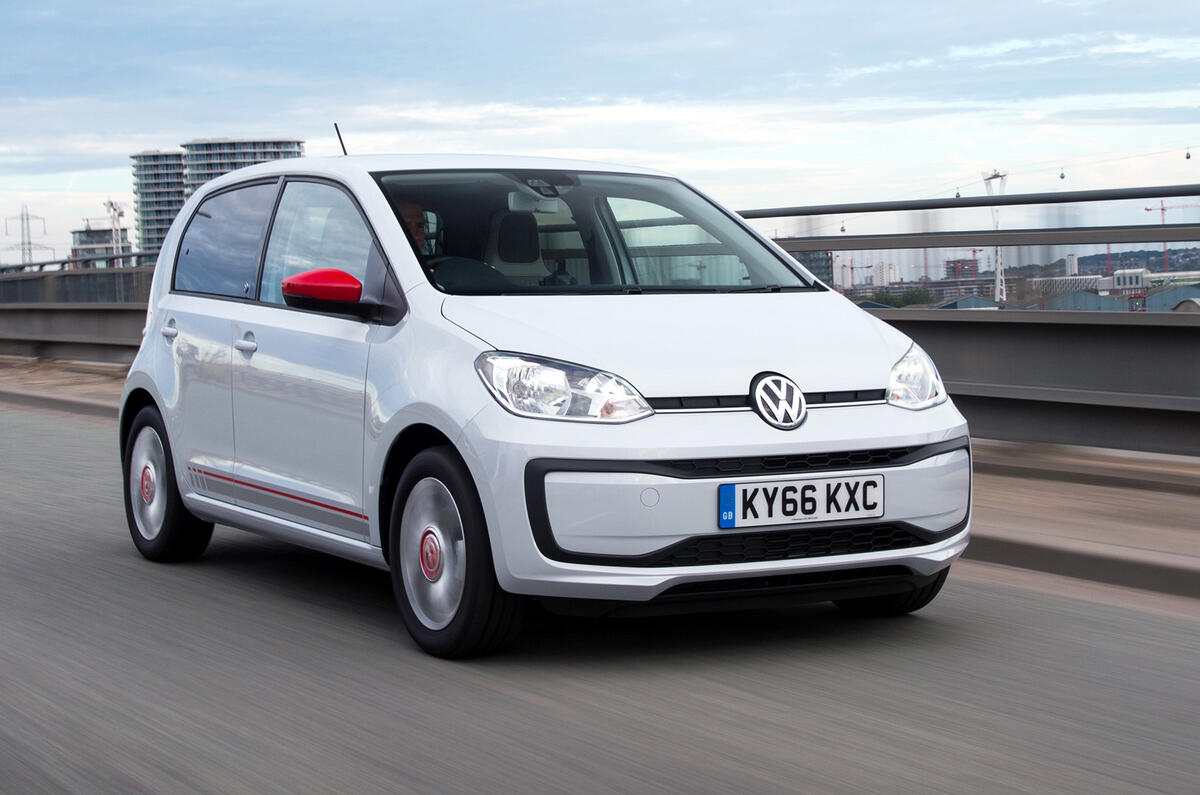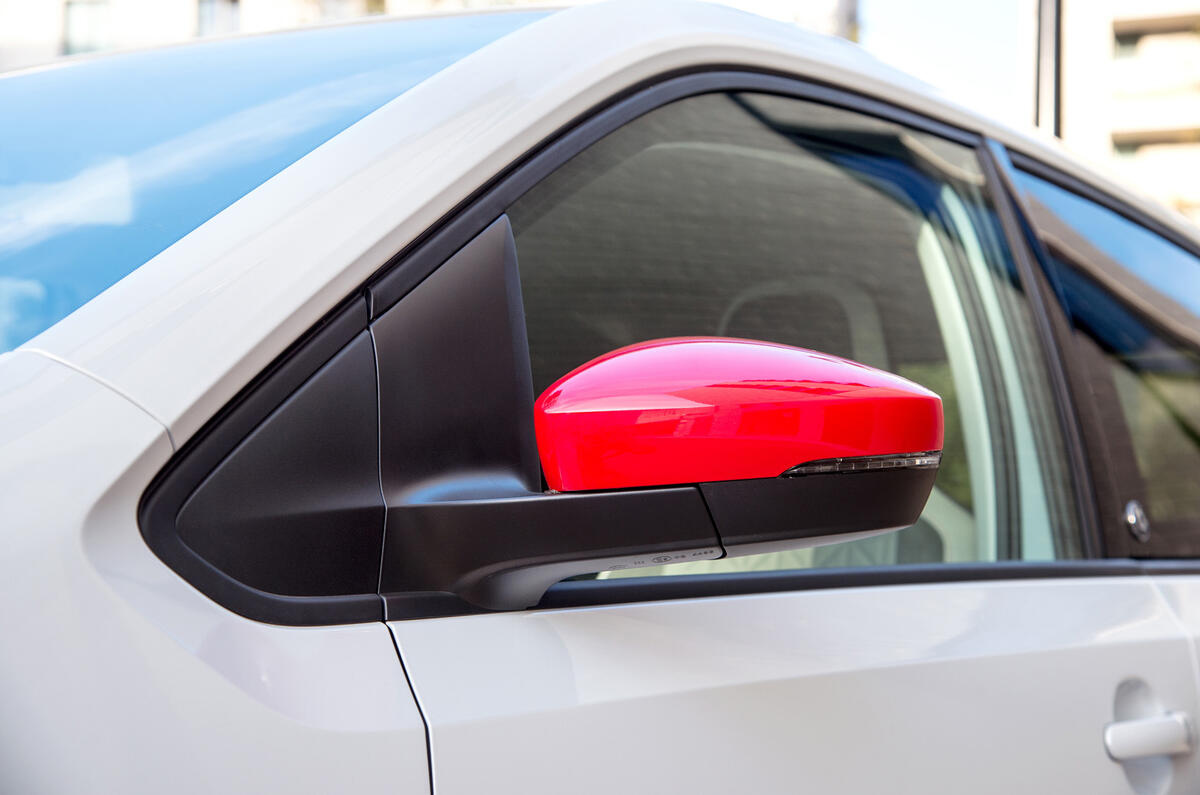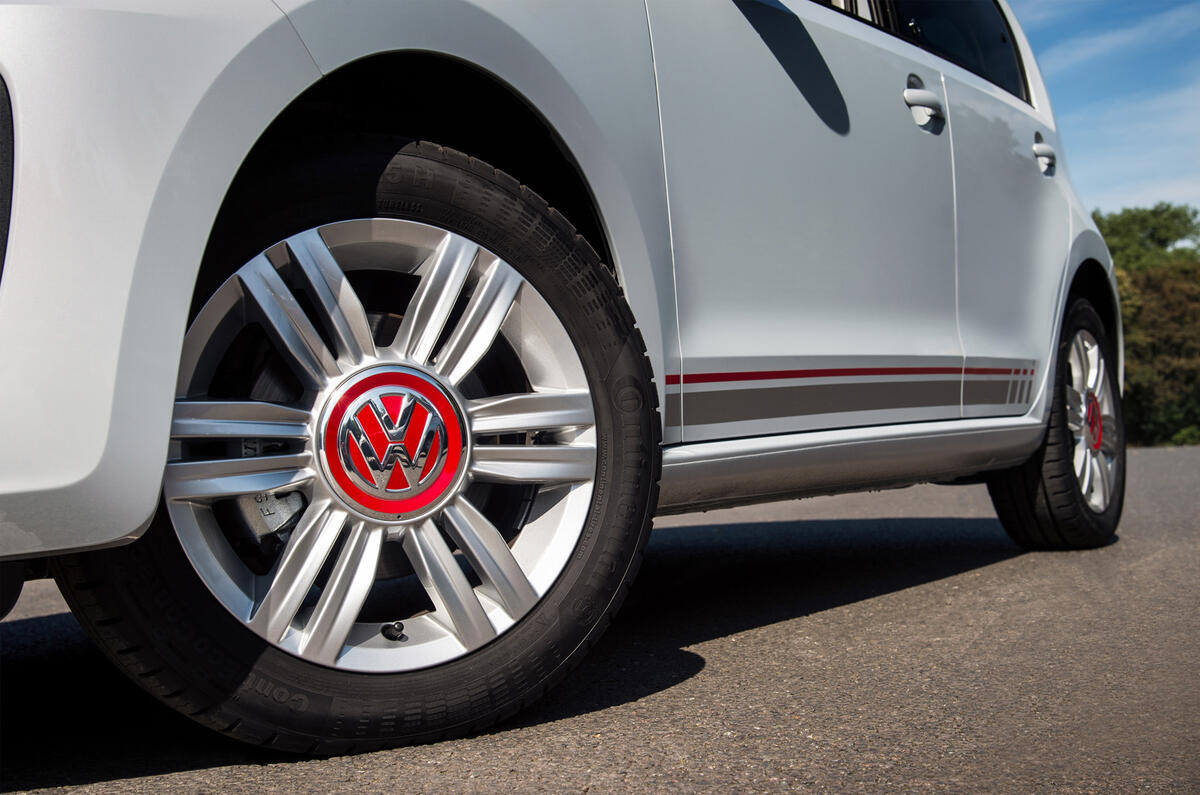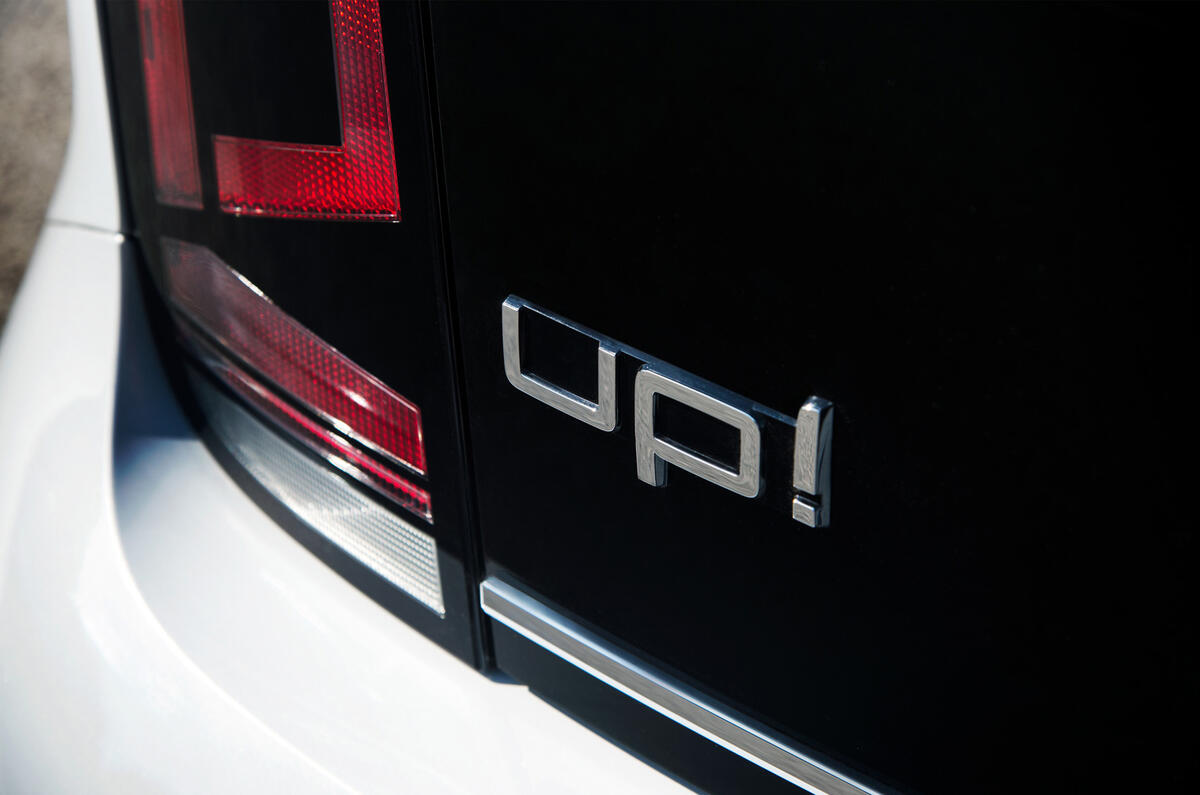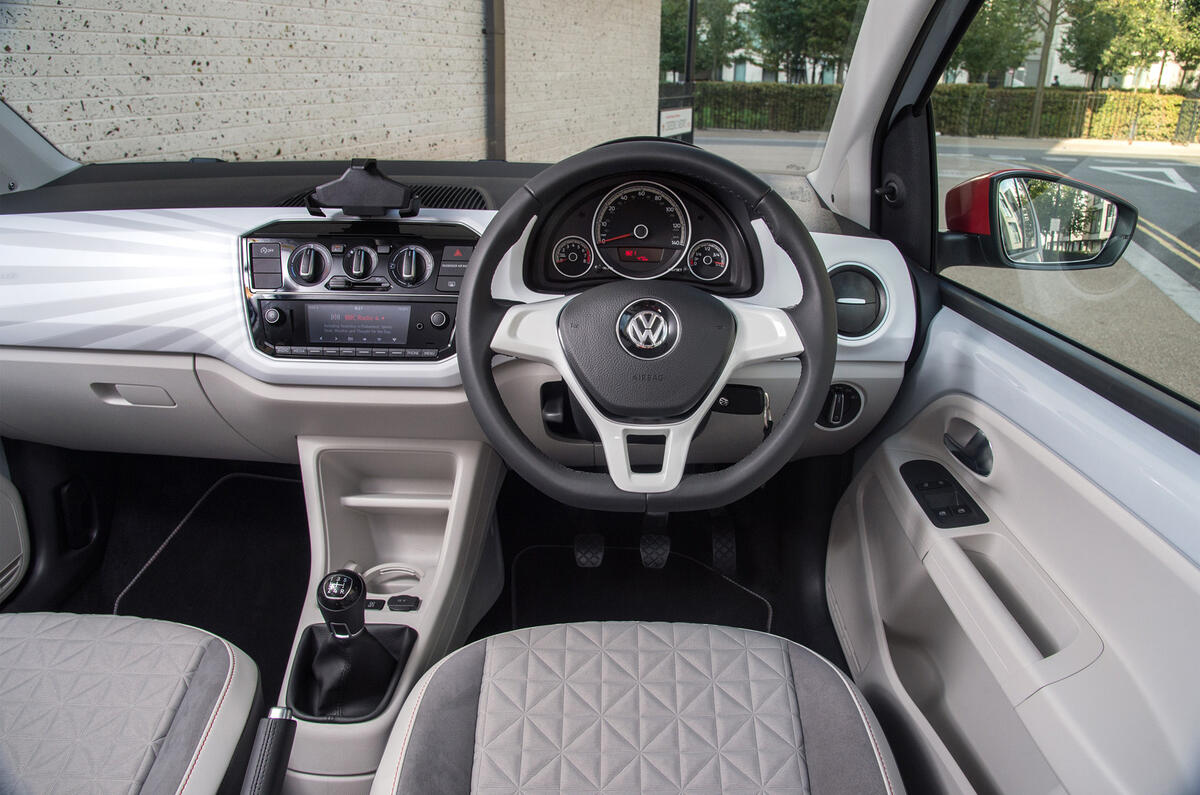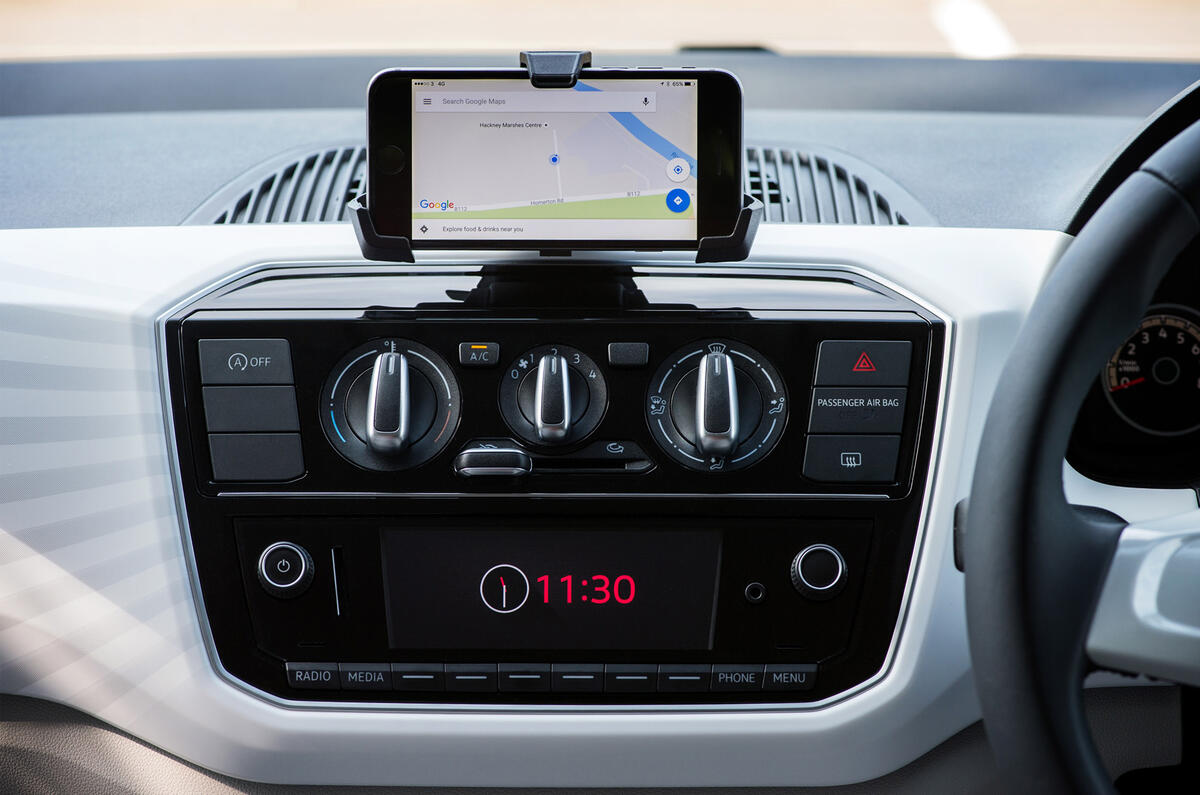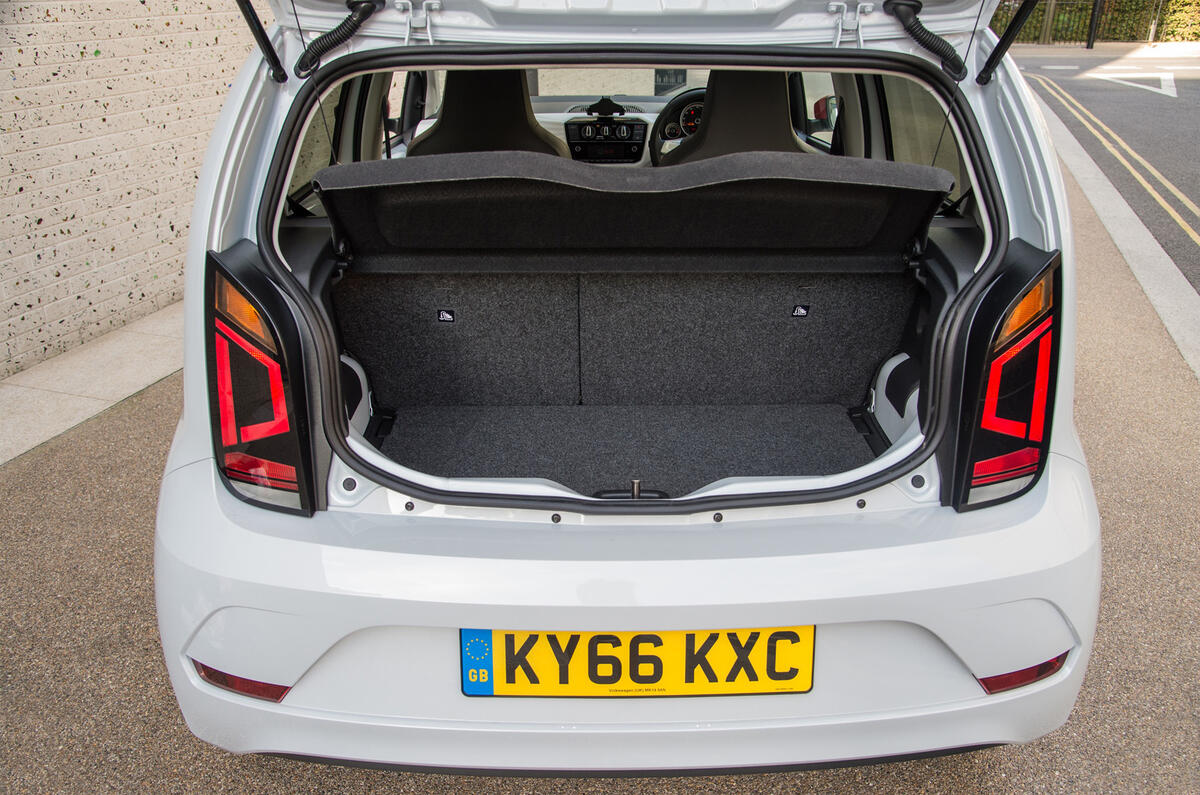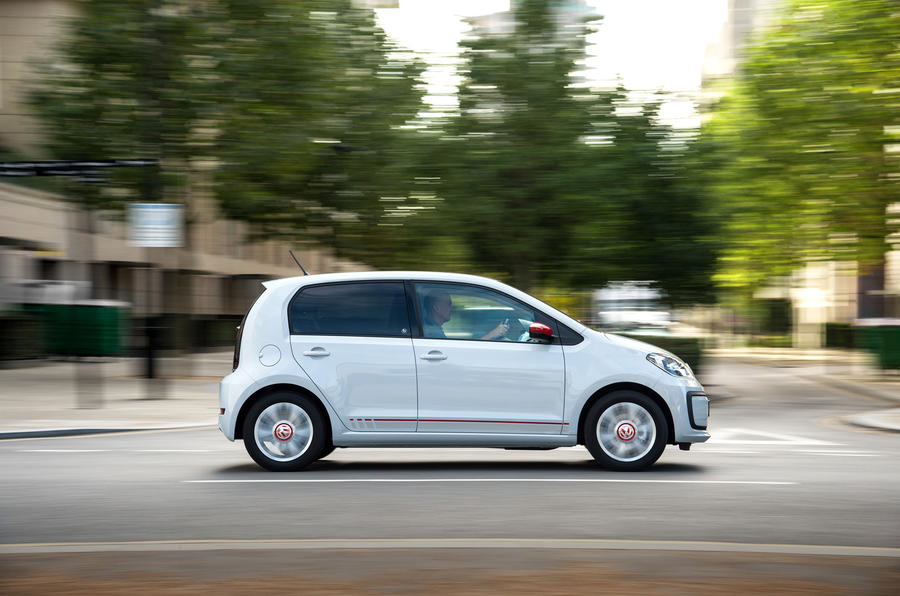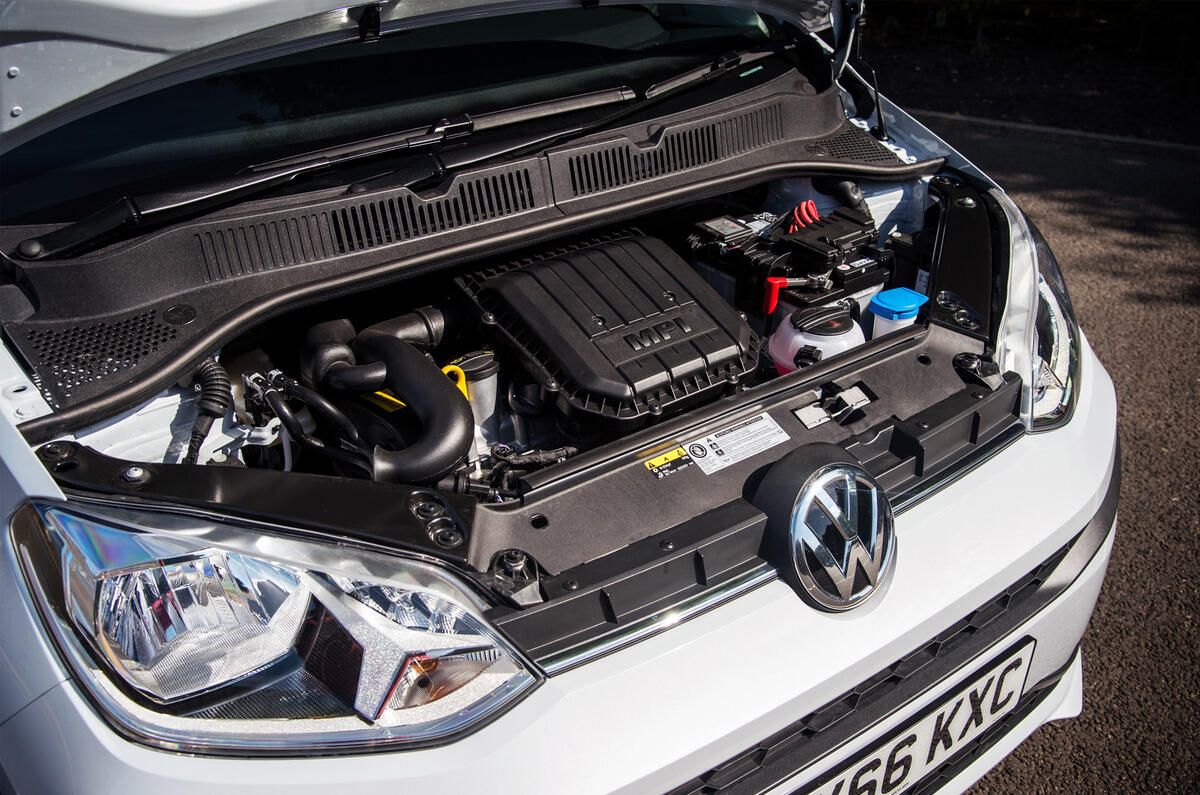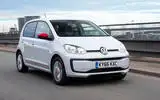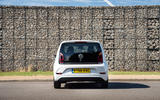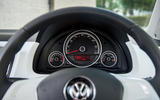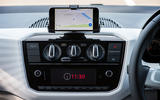The cabin is not adventurous but with Volkswagen’s seemingly effortless amalgamation of premium finish and ergonomic accuracy firmly front and centre, it hardly needs to be.
Some of the switchgear layout feels like it might have originated in the latest Volkswagen Beetle – especially set against the reflective background afforded by the glossy surround of the top-spec High Up – but, if anything, the effect feels neater and better reconciled to a scaled-down city car size.
There are four trims to choose from, while those who opt for the e-Up get a bespoke specification. The entry-level Take Up trim comes with LED day-running-lights, 14in steel wheels, electric front windows and a hill hold function, while inside there is DAB radio, a CD player, and remote central locking. Those who opt for the more efficient Bluemotion models include battery regeneration, start-stop functionality and low rolling resistant tyres.
Upgrade to the Move Up and you will alloy wheels, a 5.0in touchscreen infotainment system, with Bluetooth and USB connectivity, air conditioning, and a variable boot floor, while the High Up gains heated front seats, a smartphone phone mount to run the sat nav via a mobile application and electrically adjustable and heated mirrors.
The range-topping Up Beats sees the addition of a 300-watt Beats Audio stereo system, decals and colour scheme, while the e-Up gets the addition of a three-year Car-Net subscription, city emergency braking, cruise control and rear parking sensors, among the numerous charging paraphernalia.


